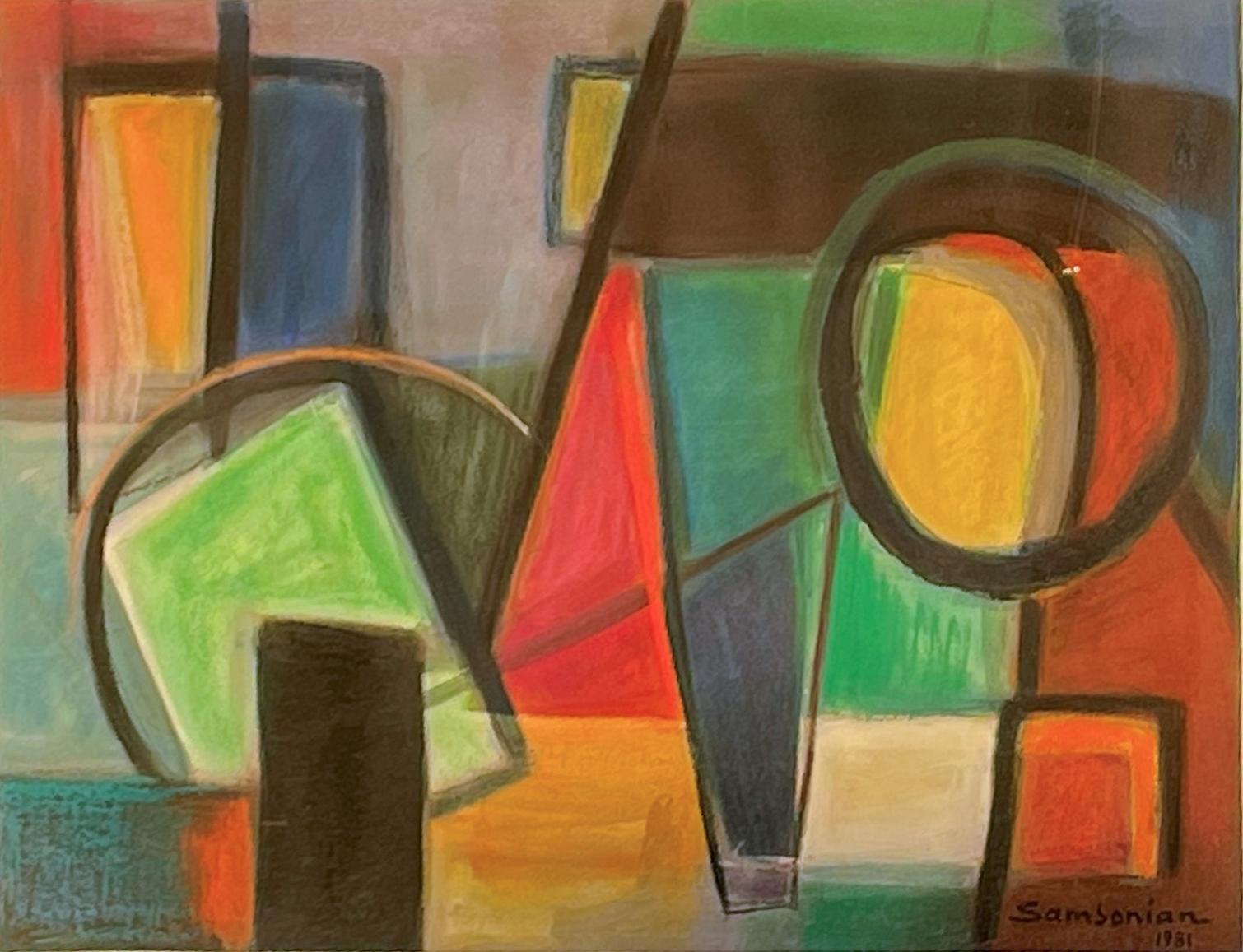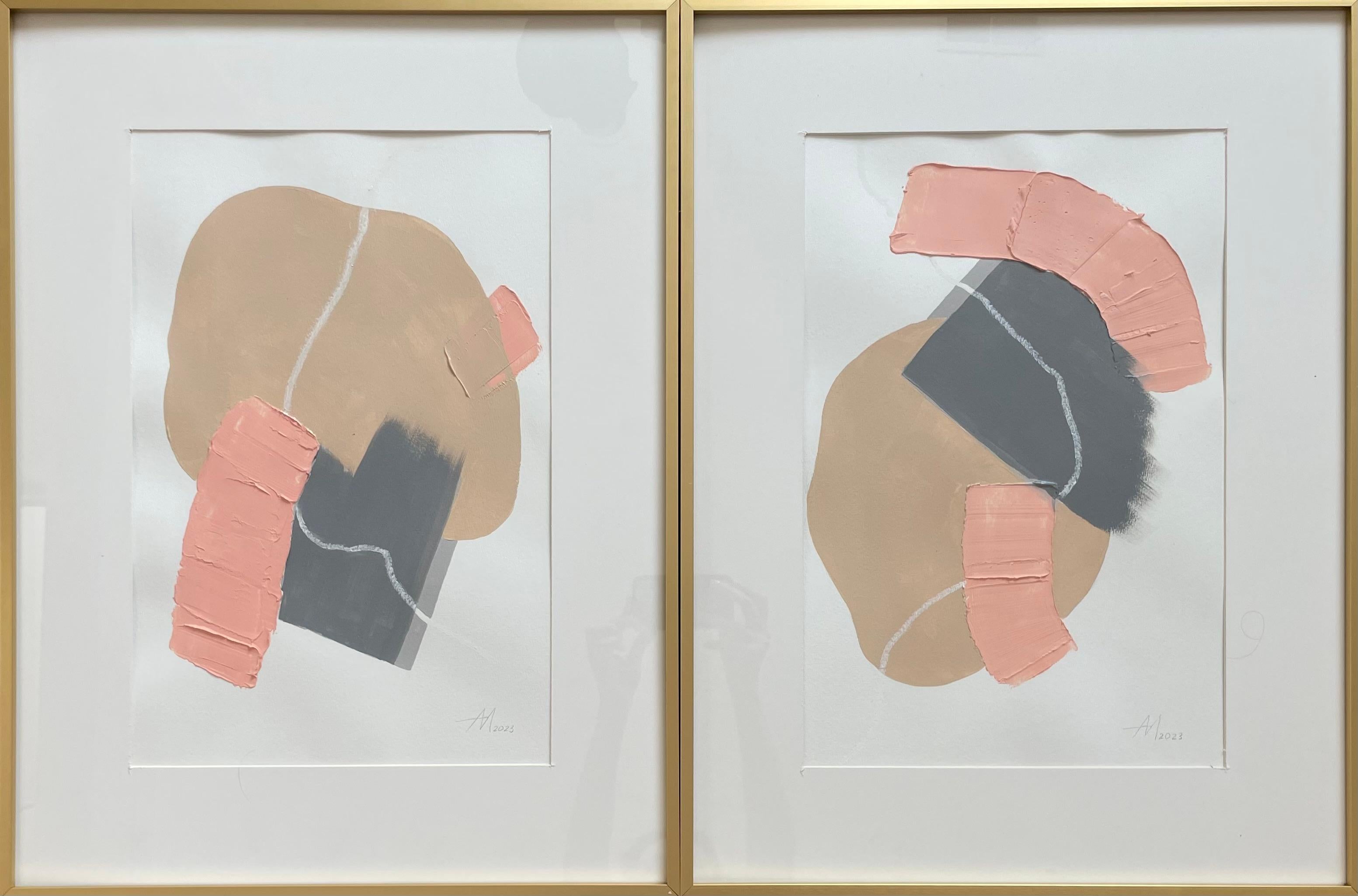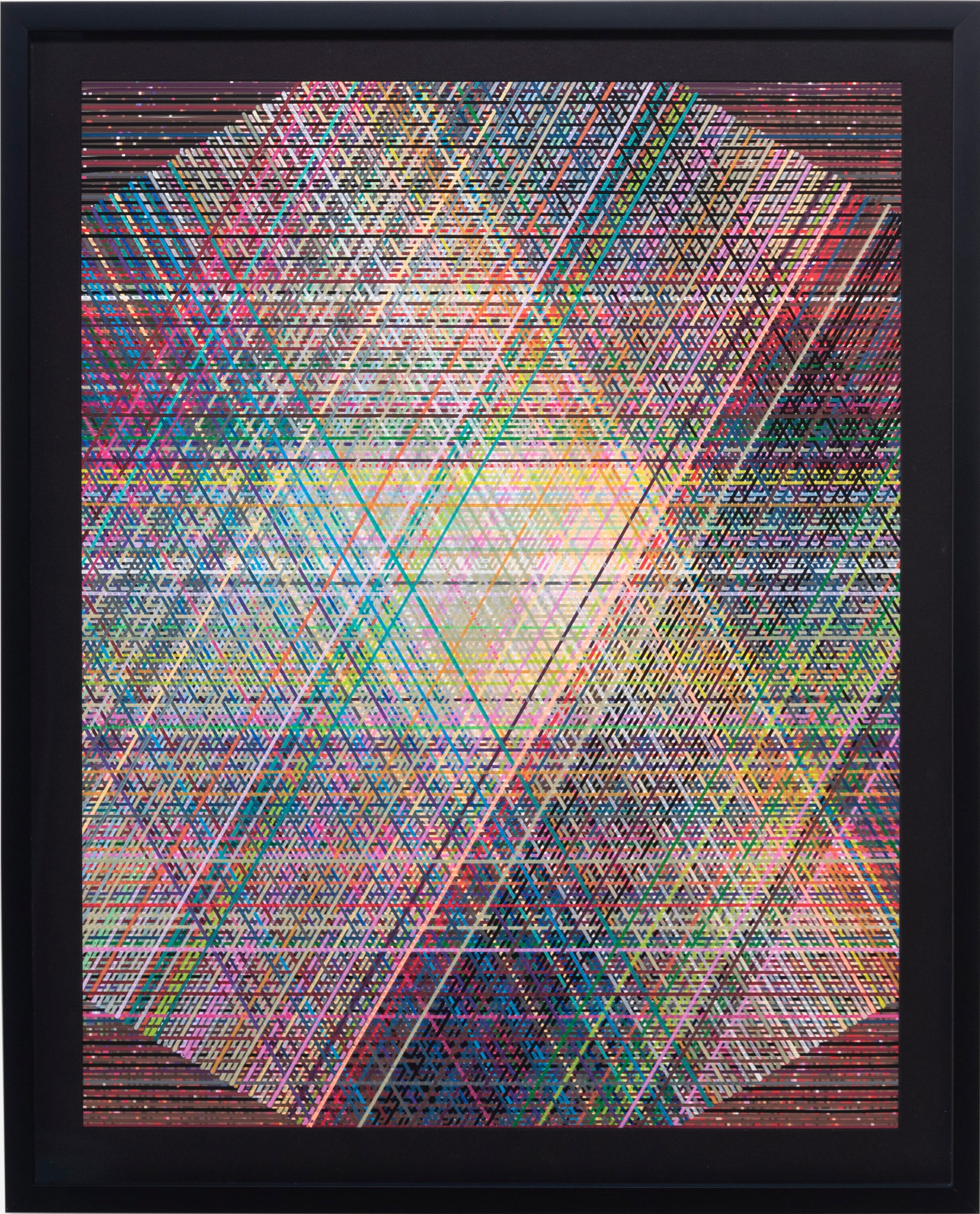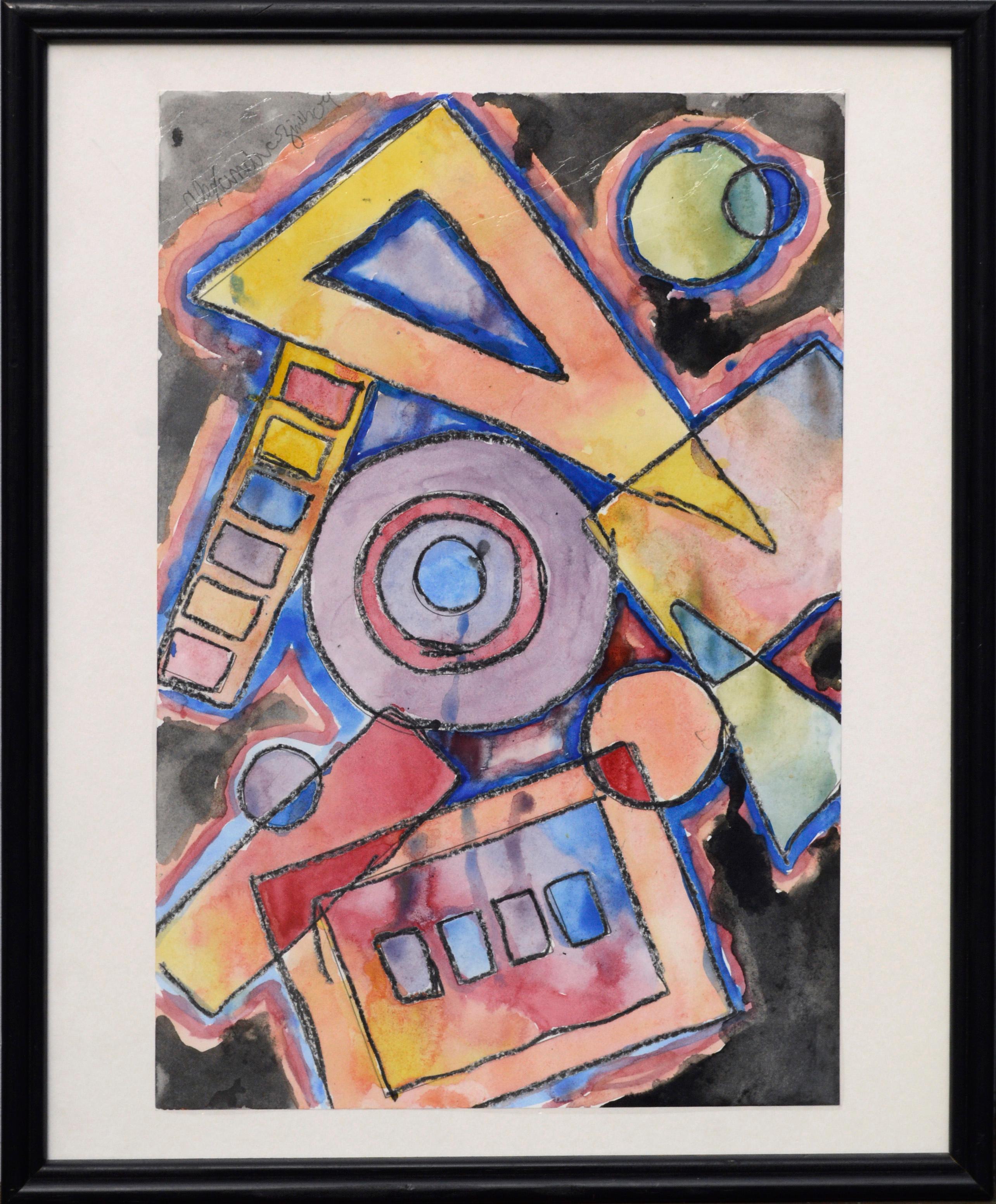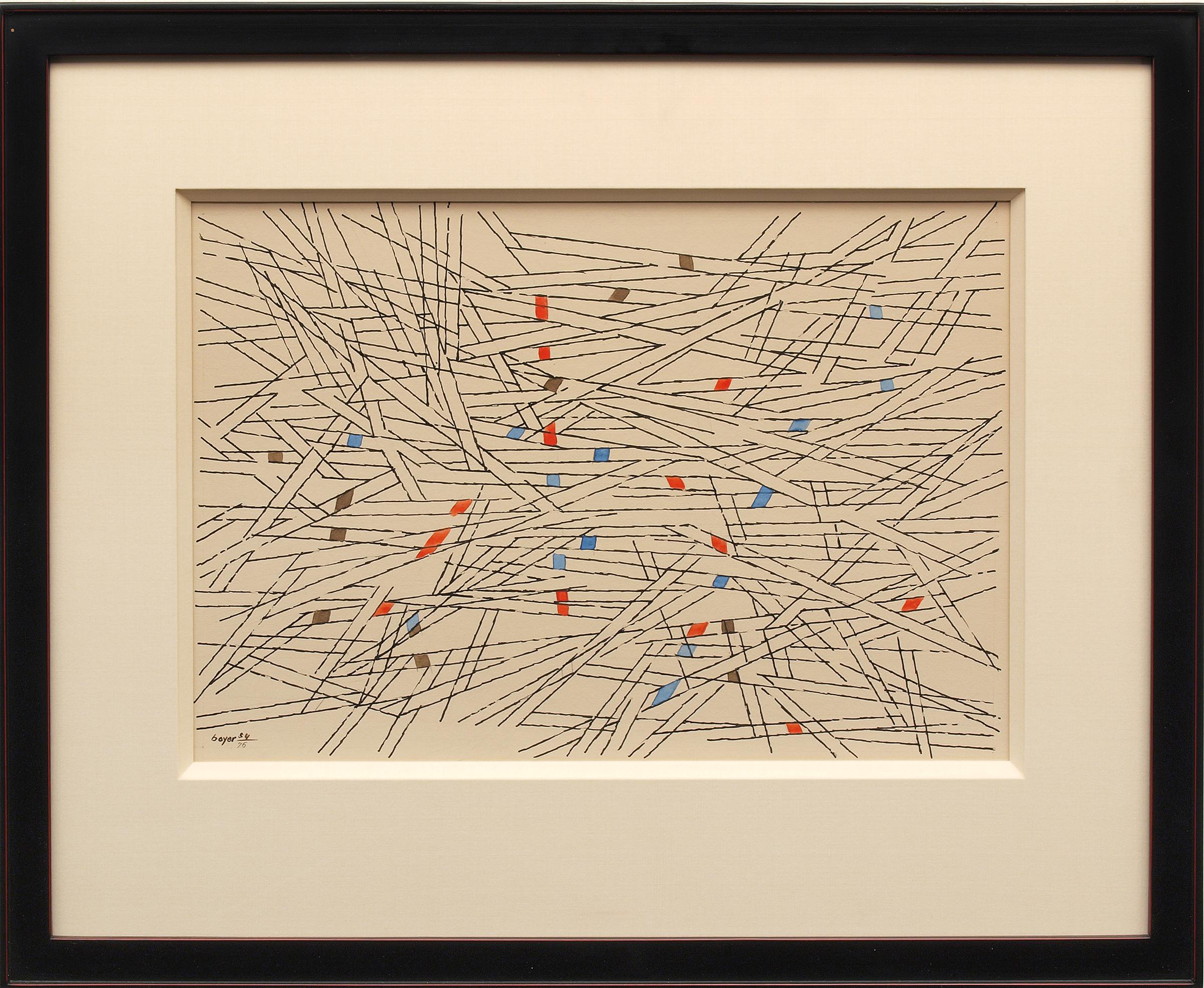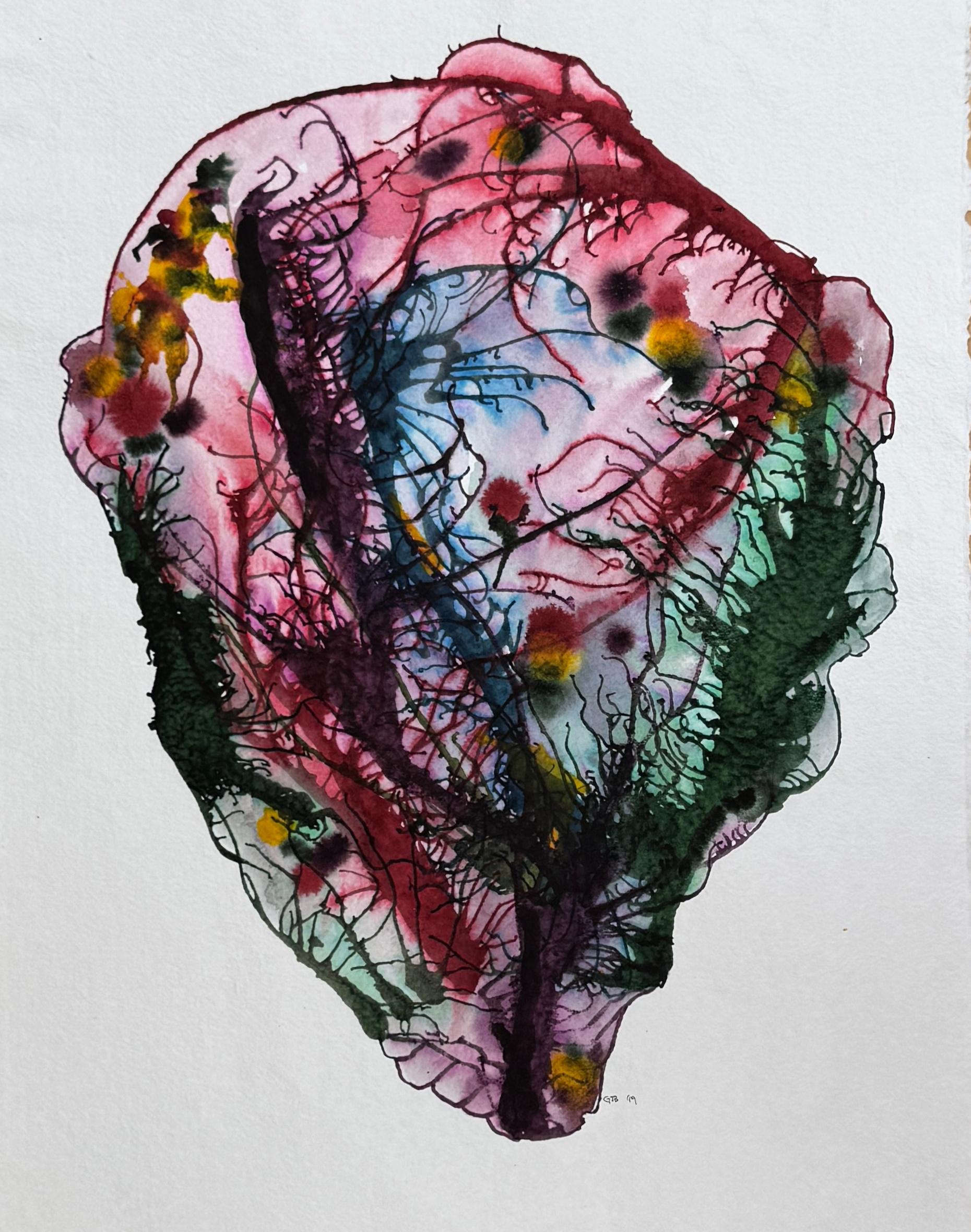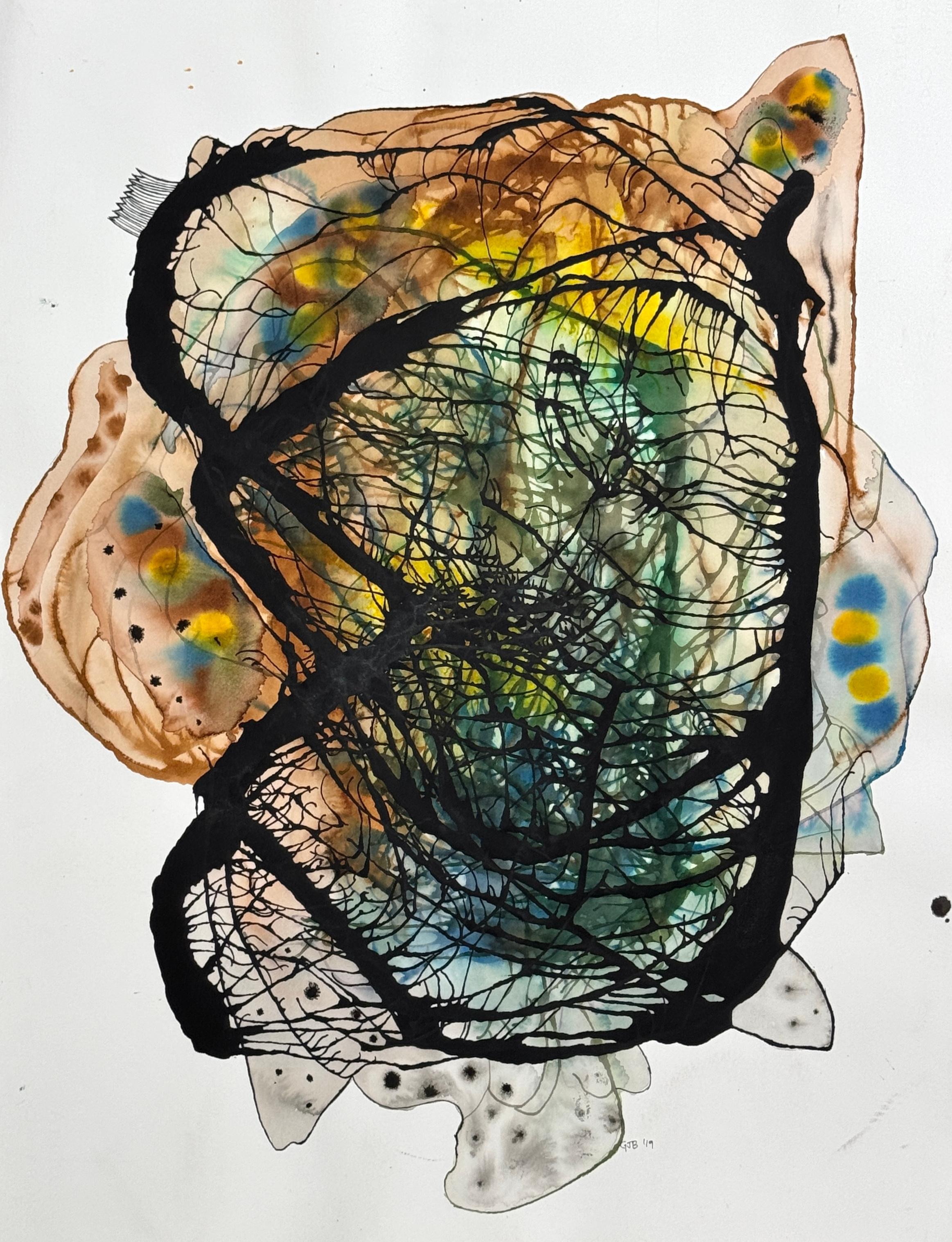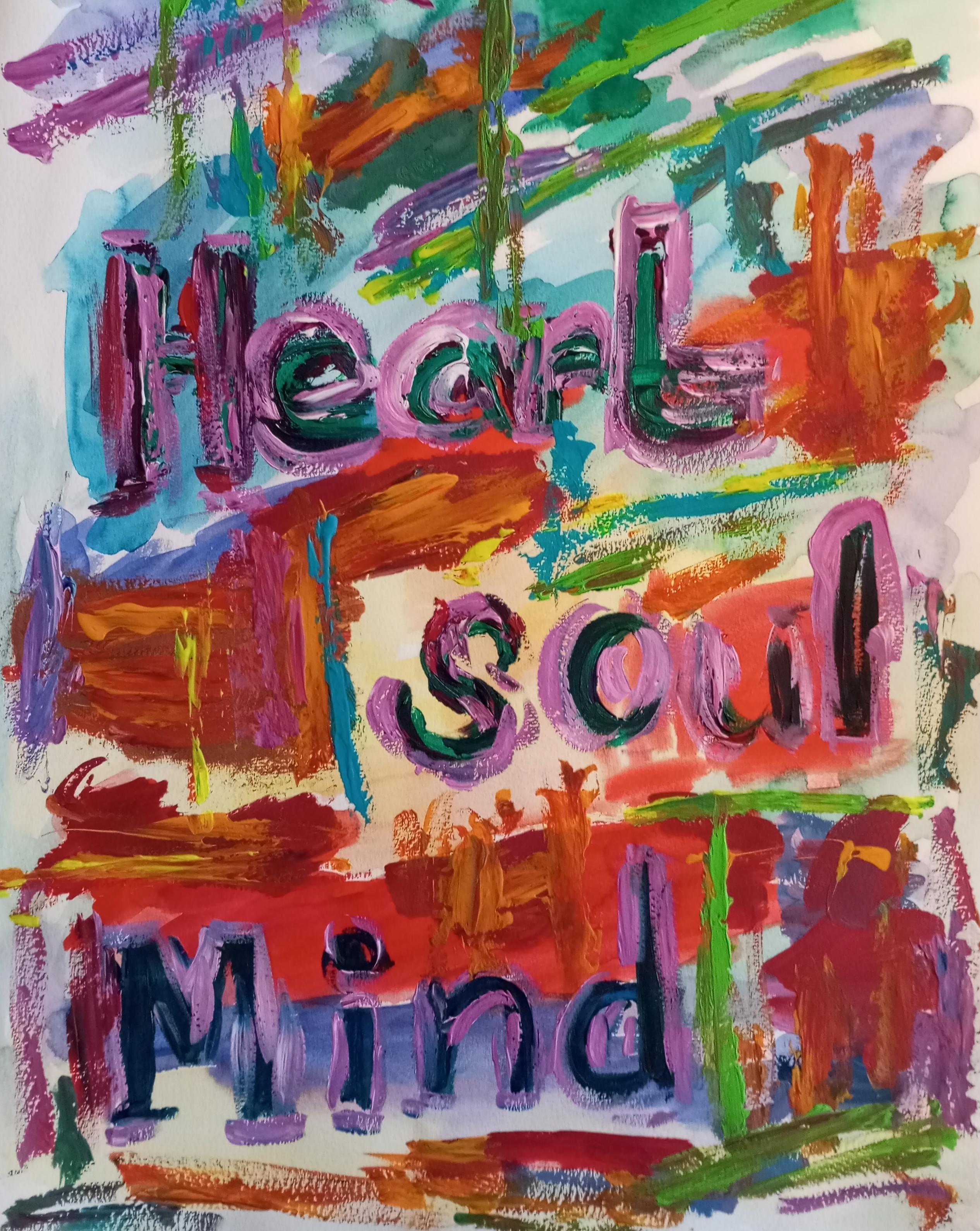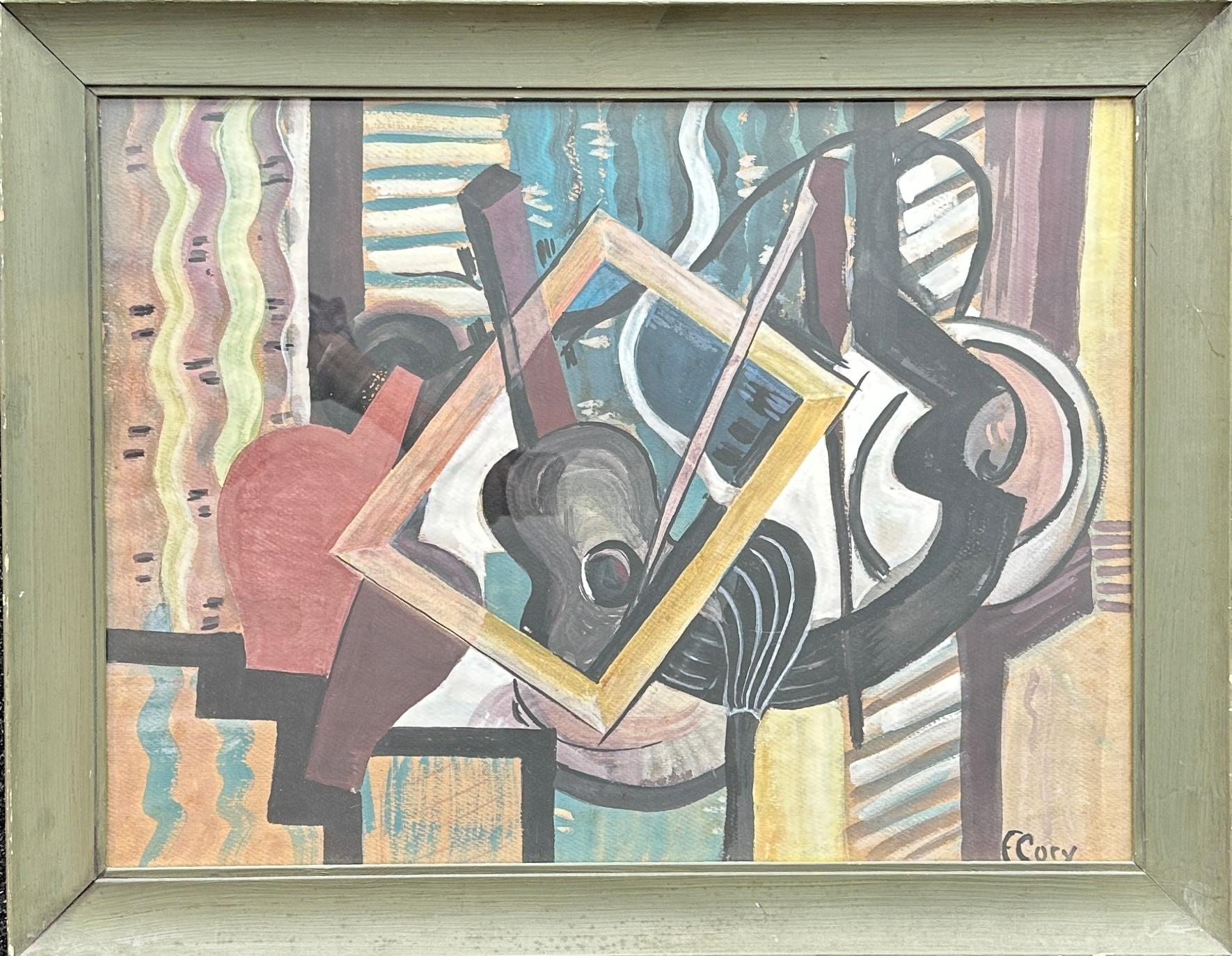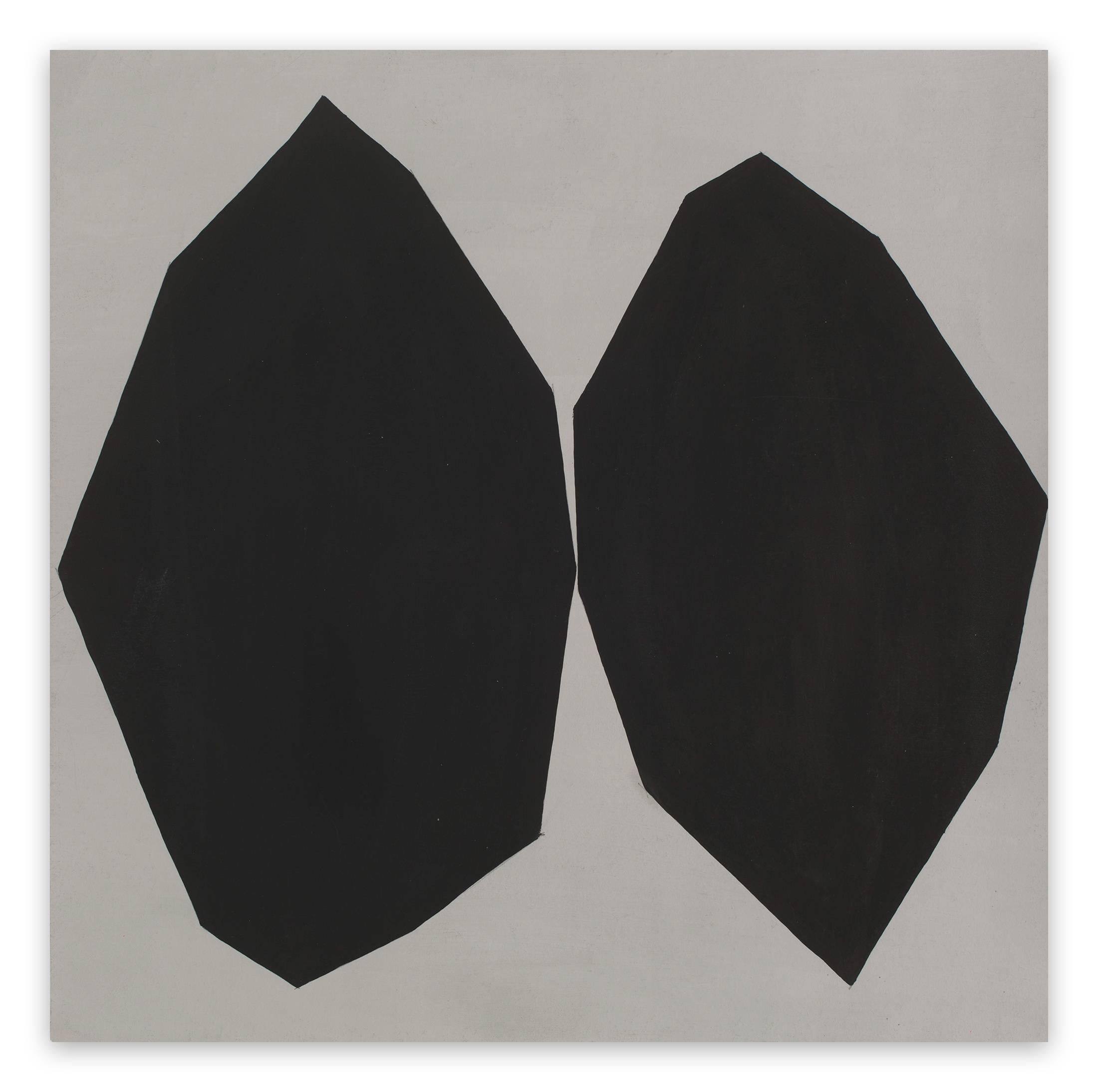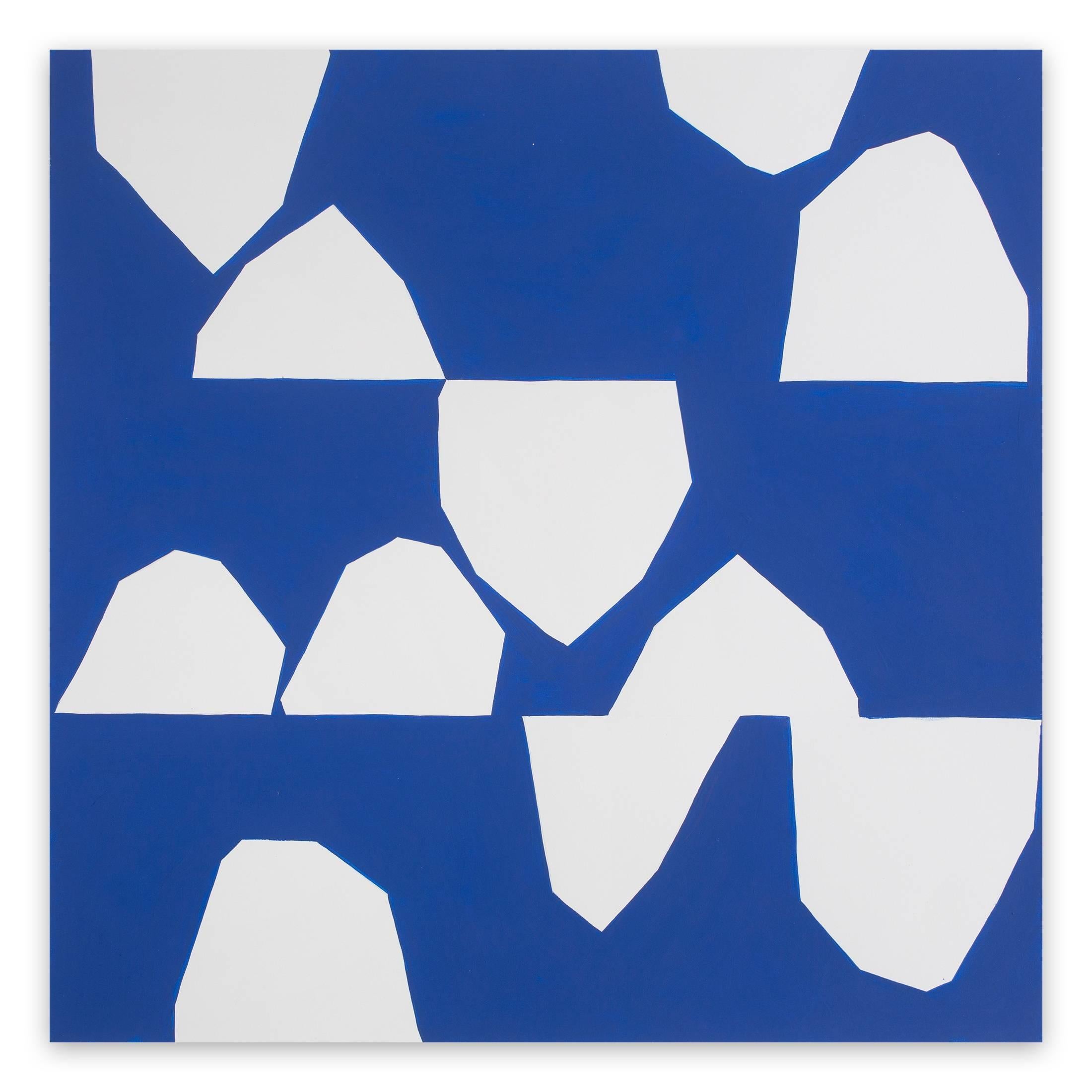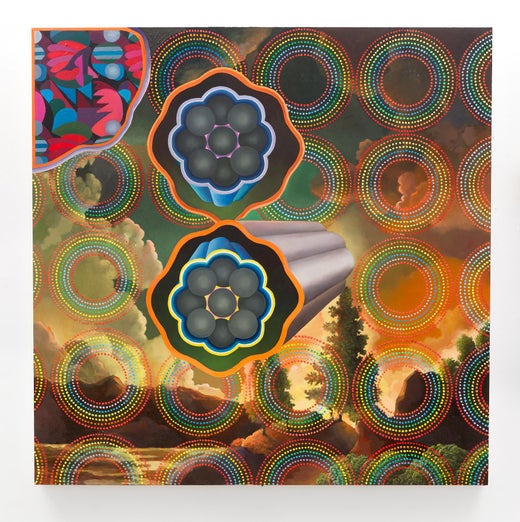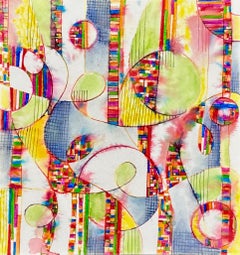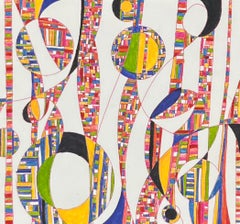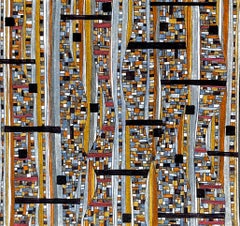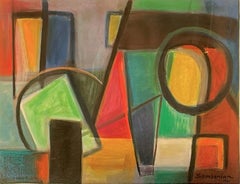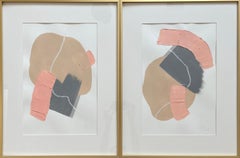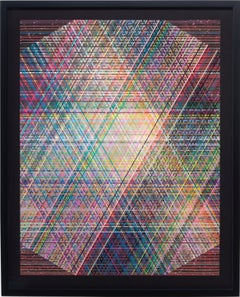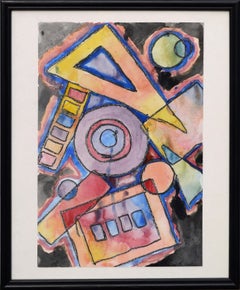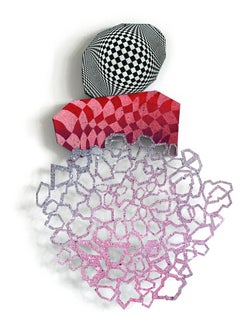
Nancy Baker, Crown, 2017, paint, paper, digital pigment print
View Similar Items
Want more images or videos?
Request additional images or videos from the seller
1 of 5
Nancy BakerNancy Baker, Crown, 2017, paint, paper, digital pigment print2017
2017
About the Item
- Creator:Nancy Baker (American)
- Creation Year:2017
- Dimensions:Height: 19 in (48.26 cm)Width: 14 in (35.56 cm)Depth: 1 in (2.54 cm)
- Medium:
- Movement & Style:
- Period:
- Condition:
- Gallery Location:Darien, CT
- Reference Number:1stDibs: LU17221604173
Nancy Baker
Nancy Baker earned her BFA from the School of Visual Arts, New York, NY. Her work has been widely exhibited throughout the US, including ODETTA Gallery in Brooklyn, NY; Front Room Gallery in Brooklyn, NY; Mark Moore Gallery, CA; Winkleman Gallery, NYC; Schema Projects, Brooklyn, NY; Marcia Wood Gallery, Atlanta, GA; Greenhill Center, Greensboro, NC; Jancar Gallery, Los Angeles, CA; NC Museum of Art, Raleigh, NC; 1708 Gallery, Richmond VA; Heriard Cimino Gallery in NOLA; and Lump Gallery, Raleigh, NC. She has received numerous awards, including two North Carolina Artists Fellowships, a Tennesse Individual Artist Fellowship, and an NEA Southern Arts Fellowship.
She was awarded a commission with MTA Arts and Design for two train stations in Brooklyn, which was fabricated in stainless steel. Last year she was commissioned to create a new work for Karen Brooks Hopkins, the Director of Brooklyn Academy of Music.
Her work is included in numerous public and private collections including the International Collage Center, Bucknell, PA; US Embassy, Kiev, Ukraine; Wellington Art Collection, Boston; City of Raleigh Municipal Art Collection, Raleigh, NC; North Carolina Museum of Art, Raleigh NC; MCI Corporation, Raleigh NC; Reynolds Industries, Winston-Salem, NC; Herman Miller, New York, NY; Bellevue Hospital Center, New York, NY; TRW, Cleveland, OH; American Hospital Corporation, Nashville, TN; First Nation Bank, Nashville, TN, among others.
She has participated in several artist residencies including Casa de Mateus, Vila Real, Portugal, and Studio Camnitzer, Valdottavo, Italy.
About the Seller
5.0
Vetted Professional Seller
Every seller passes strict standards for authenticity and reliability
Established in 2014
1stDibs seller since 2015
143 sales on 1stDibs
Typical response time: 4 hours
Authenticity Guarantee
In the unlikely event there’s an issue with an item’s authenticity, contact us within 1 year for a full refund. DetailsMoney-Back Guarantee
If your item is not as described, is damaged in transit, or does not arrive, contact us within 7 days for a full refund. Details24-Hour Cancellation
You have a 24-hour grace period in which to reconsider your purchase, with no questions asked.Vetted Professional Sellers
Our world-class sellers must adhere to strict standards for service and quality, maintaining the integrity of our listings.Price-Match Guarantee
If you find that a seller listed the same item for a lower price elsewhere, we’ll match it.Trusted Global Delivery
Our best-in-class carrier network provides specialized shipping options worldwide, including custom delivery.More From This Seller
View AllLinda Turner, Meditation Is Play, Collage, Pattern and Decoration, Automatism
Located in Darien, CT
Linda Turner, raised both in NYC and Northern Virginia, resides in Brooklyn, NY. She achieved a BFA in Surface Design/Textile Design from the Fashion Inst...
Category
2010s Abstract Geometric Mixed Media
Materials
Archival Ink, Gouache, Archival Paper, Color Pencil, Watercolor, Pencil
Linda Turner, Art Meditation 7, Collage, Pattern and Decoration, Automatism
Located in Darien, CT
Linda Turner, raised both in NYC and Northern Virginia, resides in Brooklyn, NY. She achieved a BFA in Surface Design/Textile Design from the Fashion Inst...
Category
2010s Abstract Geometric Mixed Media
Materials
Archival Ink, Watercolor, Gouache, Archival Paper, Pencil, Color Pencil
Linda Turner, Art Meditation 5, Collage, Pattern and Decoration, Automatism
Located in Darien, CT
Linda Turner, raised both in NYC and Northern Virginia, resides in Brooklyn, NY. She achieved a BFA in Surface Design/Textile Design from the Fashion Inst...
Category
2010s Abstract Geometric Mixed Media
Materials
Archival Ink, Watercolor, Gouache, Archival Paper, Pencil, Color Pencil
Linda Turner, Art Meditation 18, Collage, Pattern and Decoration, Automatism
Located in Darien, CT
Linda Turner, raised both in NYC and Northern Virginia, resides in Brooklyn, NY. She achieved a BFA in Surface Design/Textile Design from the Fashion Inst...
Category
2010s Abstract Geometric Mixed Media
Materials
Archival Ink, Watercolor, Gouache, Archival Paper, Pencil, Color Pencil
Linda Turner, Art Meditation 12, Collage, Pattern and Decoration, Automatism
Located in Darien, CT
Linda Turner, raised both in NYC and Northern Virginia, resides in Brooklyn, NY. She achieved a BFA in Surface Design/Textile Design from the Fashion Inst...
Category
2010s Abstract Geometric Mixed Media
Materials
Archival Ink, Watercolor, Gouache, Archival Paper, Pencil, Color Pencil
Karen Schiff, Word Snake, 2014, Watercolor, Rag Paper, Pencil
By Karen Schiff
Located in Darien, CT
Karen Schiff is an artist and wordsmith based in New York; she has always been a reader as well as a visual artist. Her drawings, paintings, installations, and performances combine t...
Category
2010s Abstract Geometric Abstract Drawings and Watercolors
Materials
Watercolor, Rag Paper, Pencil
You May Also Like
"Colorful Geometric Abstraction, " Simon Samsonian, Armenian Artist
Located in New York, NY
Simon Samsonian (1912 - 2003)
Colorful Geometric Abstraction, 1981
Oil on paper
16 x 22 inches
Signed and dated lower right
Provenance:
Estate of the artist
This survivor of the Armenian genocide wound up in a Cairo orphanage in 1927. He rose to fame as one of Egypt’s great modernists, but after moving to Long Island late in life he withdrew into anonymity. Now his compelling story is being told. Art historians are finally beginning to realize that the power of abstraction in its early years was a zeitgeist not limited to the major European centers of the avant-garde — Paris, Munich, and Moscow — but one that quickly rippled to major cities throughout the world. Within a few decades that original shock of a new vision had inspired thousands of artists from different cultures — particularly those the Middle East — whose translations were not slavish imitations of works by seminal figures like Picasso, Braque, Malevich, and Kandinsky but creative variants colored by their respective cultures.
This essay focuses on an extraordinary Armenian artist, his harrowing survival of the genocide, his rise to fame in Cairo, and his creation of a unique style of abstraction. Art historians have typically formed a chorus that teaches the history of abstraction like this: Just before and during the World War I era, several avant-garde artists emerged to create shockingly different new forms by which artists could express themselves. In Paris, Picasso and Braque broke out with cubism, quickly followed by Mondrian. In Moscow, Malevich created Suprematism, the ultimate hard-edge geometric abstraction. And in Munich, Kandinsky emerged as the father of Abstract Expressionism. Within these few short years a zeitgeist was sensed throughout the art world. American pioneers, too — particularly Stanton Macdonald-Wright and Morgan Russell — felt this explosive freedom of expression. When Europe was recovering after World War I it became clear that Paris would retain its title as capitol of the art world, lasting through the Roaring Twenties and even through the Great Depression. But the end of World War II changed everything. A parallel war had been won by a group of irascible young Abstract Expressionists in New York — led by Pollock, Rothko, DeKooning, and Kline. No sooner had Paris been liberated from the Germans than Picasso, Matisse, Breton, and Duchamp surrendered to the Americans. From that point on New York would be the epicenter of the art world.
But a lens that focuses myopically on the war between the avant-garde of Paris and New York misses the wider narrative of multiple aesthetic modernities that developed in the several decades following World War I. For Armenian artists the matter is even more complex owing to the genocide of 1915 where more than 1.5 million people — seventy-five percent of Armenians in the Ottoman Empire — were massacred. Those not shot on the spot were sent on death marches through the Mesopotamian desert without food or water. Frequently, the marchers were stripped and forced to walk naked under the scorching sun until they dropped dead.
As a child Samsonian witnessed the murder of his parents and most of the members of his family. Soon thereafter, his older sister, Anahid, quickly shepherded him into a line of children being rescued by Greek nuns. But they became separated and he lost her, too. He was sent to a Greek orphanage in Smyrna (now Izmir), on Turkey’s west coast. Because he only knew his first name, the orphanage gave him a last name based on the place where they found him — Samsun — a major port on Turkey’s north coast on the Black Sea. His birth date was unknown, too. According to Samsonian’s vague recollections he assumed he was about three or four years old at the onset of the genocide, which would place his birth year in 1911 or 1912. In 1922, when Samsonian was about 10, the Turks ended their war with the Greeks by putting Smyrna to the torch in what has been called the “Catastrophe of Smyrna.” Once again, the child was on the run, escaping the fire and slaughter. He found temporary refuge in Constantinople, but within a year that major port would fall to the Turks, too, and become renamed as Istanbul. This time, Samsonian was whisked away to an orphanage in Greece founded by the American charity, Near East Relief — which is credited with saving so many Armenian orphans that the American historian Howard M. Sachar said it “quite literally kept an entire nation alive.
Any understanding of Samsonian’s approach to modernism requires careful consideration of the impact of his early years because his art is inseparable from the anguish he experienced. In 1927, when he was a teenager, he was transferred to Cairo, Egypt, then a cosmopolitan city hosting a sizable portion of the Armenian diaspora. There he lived with thirty-two other children on the top floor of the Kalousdian Armenian School. Upon graduating in 1932 he won a scholarship to attend the Leonardo da Vinci Art Institute — an Italian art school in Cairo — where he won first prize in final examinations among one hundred students. He found work with an Armenian lithographic printer and he returned to the Kalousdian Armenian School to teach drawing. In 1939 he married one of his students, Lucy Guendimian.
The Cairo in which Samsonian matured as an artist was home to many prominent art collectors after World War I. In this receptive environment Samsonian exhibited widely and won many awards. Beginning in 1937 and for the next thirty years he exhibited annually at the prestigious Le Salon du Caire hosted by the Société les Amis de l’Art (founded in 1921). After World War II he hit his stride as a modernist in Cairo, counting among his peers other artists of the Armenian diaspora such as Onnig Avedissian, Achod Zorian, Gregoire Meguerdichian, Hagop Hagopian...
Category
1980s Abstract Geometric Abstract Drawings and Watercolors
Materials
Paper, Oil
Abstract composition - acrylic on paper in beige, gray, pink salmon color, 2023
By Mila Akopova
Located in Fort Lee, NJ
Interior design paintings. The work was done with acrylic in beige, pink salmon and grey color on a paper. Each work is 24 by 18 inches in size, framed (gold).
Mila Akopova is New Y...
Category
2010s Abstract Geometric Abstract Paintings
Materials
Paper, Oil Crayon, Acrylic
"Study for Messier 17, " Acrylic on Paper
By Jan Pieter Fokkens
Located in Chicago, IL
Entitled "Study for Messier 17," this painting by Chicago-artist Jan Pieter Fokkens offers a representation of the spectacular star-forming region Messier 17, also known as the Omega Nebula or Swan Nebula. A vast region of gas, dust and hot young stars, Messier 17 lies in the heart of the Milky Way, tucked within the constellation of Sagittarius (the Archer).
Inspired by telescope images of deep space, contemporary computer compression algorithms and early non-representational art...
Category
21st Century and Contemporary Abstract Geometric Abstract Paintings
Materials
Paper, Acrylic
Abstract Geometric
Located in Soquel, CA
Bight abstract geometric composition by Alexandra Zinih (20th Century). Signed and dated ("Alexandra Zinih '09") in the upper left corner. Presented in a black frame with a white bac...
Category
Early 2000s Abstract Geometric Abstract Drawings and Watercolors
Materials
Paper, Watercolor
1950s Abstract Composition: Brown, Orange, Blue, Black Lines, Ink Watercolor Art
By Herbert Bayer
Located in Denver, CO
This captivating watercolor and ink abstract composition by Herbert Bayer (1900-1985) features dynamic shapes in brown, orange, and blue, framed by bold black parallel lines. The wor...
Category
1950s Abstract Geometric Abstract Drawings and Watercolors
Materials
Paper, Ink, Mixed Media, Watercolor
Framed Watercolor Painting on Handmade Indian Paper: Blackbird C
Located in New York, NY
Guillermo Bublik is an Argentinian/American painter based in New Jersey.
His works are easily recognizable by their bold combinations of colors and
abstract geometric forms. Commonly...
Category
2010s Abstract Geometric Abstract Paintings
Materials
Watercolor, Handmade Paper
